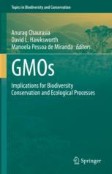Search
Search Results
-
Transgenic Approaches for Improvement of Brassica Species
Brassicaceae family includes a large number of commercially important plants, which are oilseed crops, vegetables, forage crops and are used in the...
-
Entomopathogenic Microbes for Sustainable Crop Protection: Future Perspectives
Food security for a growing world population is a challenging task under limited agriculture land and increasing incidences of pest infestation. In...
-
Biological Control and Need of a Strategic Shift in Plant Disease Management
Biological control agents (BCAs) interact with the components of the disease triangle to reduce the incidence of disease. The biocontrol methods,...
-
The fungal root endophyte Serendipita vermifera displays inter-kingdom synergistic beneficial effects with the microbiota in Arabidopsis thaliana and barley
Plant root-associated bacteria can confer protection against pathogen infection. By contrast, the beneficial effects of root endophytic fungi and...

-
Nitrogen Fixation of Legumes: Biology and Physiology
Legumes (Leguminosae or Fabaceae) are considered the second most cultivated crop, covering 14% of the total cultivated land worldwide. Legumes...
-
A novel cucumisin-like serine protease from leaf of legume Canavalia ensiformis
Proteases are essential for plant physiology. Leguminosae species express high level of these enzymes, however, they were only reported in seeds. The...

-
Probiotics and Their Potential Applications: An Introduction
Probiotics constitute beneficial microorganisms or their components reported for their health benefits to the hosts. A plethora of research conducted...
-
An Early Season Perspective of Key Differentially Expressed Genes and Single Nucleotide Polymorphisms Involved in Sucrose Accumulation in Sugarcane
Sucrose is the prime product of sugarcane and a significant variation has been observed among different sugarcane genotypes for the time taken to...

-
Contouring Multifaceted Biological Activities and Applications of Trichoderma spp. for Managing Plant Health
An increasing human population will lead to a higher demand for food, posing significant global challenges. To achieve sustainable agriculture,...

-
Genetically Modified (GM) Crops Harbouring Bacillus thuringiensis (BT) Gene(S) to Combat Biotic Stress Caused by Insect Pests
Insect pests are a menace to the crop plants as they cause 15–22% annual crop loss. Bacillus thuringiensis (Bt) crystal protein toxin(s) have been...
-
Functional Nitrogen in Rhizosphere
Rhizosphere, a zone of intense microbial activity is a hub of soil–plant–microbial interactions playing a vital role in the growth and yield of...
-
Environmental Analytical and Ecotoxicological Aspects of Bt Maize in the Pannonian Biogeographical Region of the European Union
Insect-resistant transgenic crops expressing toxins originated from Bacillus thuringiensis (Bt) appear advantageous by not requiring field...
-
Comprehensive transcriptome analysis of faba bean in response to vernalization
Main conclusionThis study unravels the transcriptional response of a highly productive faba bean cultivar under vernalization treatment.
...
-
Recent Advances in Aluminum Phytotoxicity
Aluminum (Al) is the third most abundant metal in the earth’s crust after oxygen and silicone. Geologically Al has existed as a complex compound with...
-
Trichoderma Species: A Blessing for Crop Production
Trichoderma species are such a soil fungi which are present worldwide. A wide range of soil habitats ranging from cool temperate to tropical climates...
-
Exploration of Heat Stress-Responsive Markers in Understanding Trait Associations in Wheat
Heat stress (HS) is detrimental to wheat production and productivity globally. To combat HS, several genetic, molecular, and genomic approaches have...

-
Fusion gene construct preparation with lectin and protease inhibitor genes against aphids and efficient genetic transformation of Brassica juncea using cotyledons explants
Globally, Brassica juncea is one of the significant oilseed crops, which is commercially important and cultivated under diverse agro-climatic region...

-
Oak displays common local but specific distant gene regulation responses to different mycorrhizal fungi
BackgroundAssociations of tree roots with diverse symbiotic mycorrhizal fungi have distinct effects on whole plant functioning. An untested...

-
Brassicaceae Plants Response and Tolerance to Salinity
Increasing soil salinity is one of the most important global issues for recent agriculture, which can potentially cut down the total crop...
-
Identification and map** of quantitative trait loci (QTL) and epistatic QTL for salinity tolerance at seedling stage in traditional aromatic short grain rice landrace Kolajoha (Oryza sativa L.) of Assam, India
Salinity stress is the most prominent stress impacting rice productivity worldwide. In the past, several quantitative trait loci (QTLs) for salinity...

